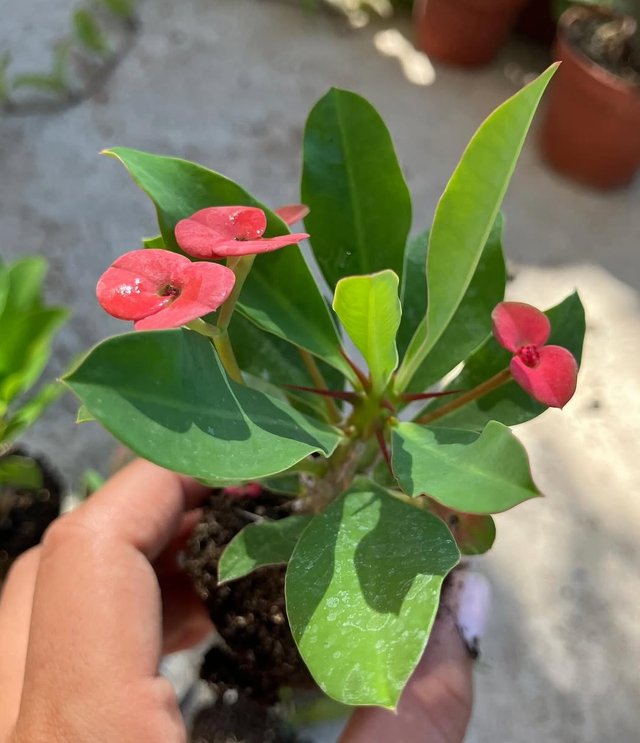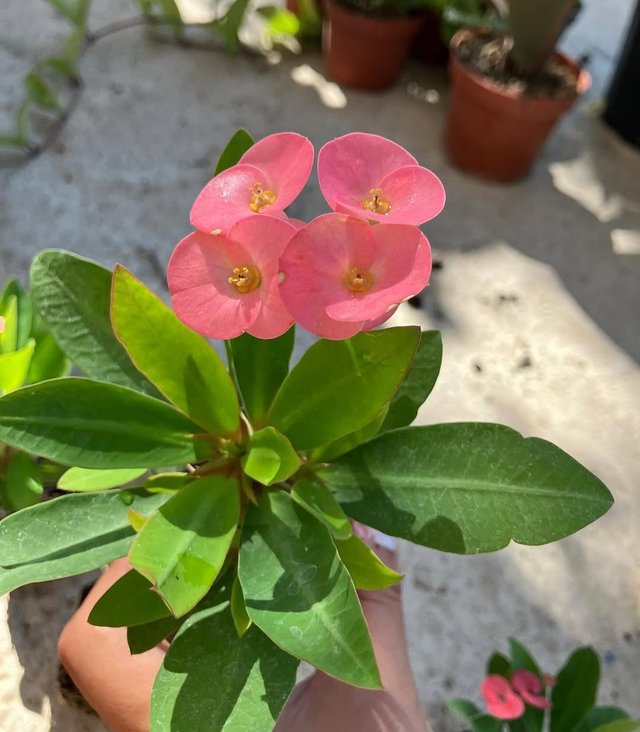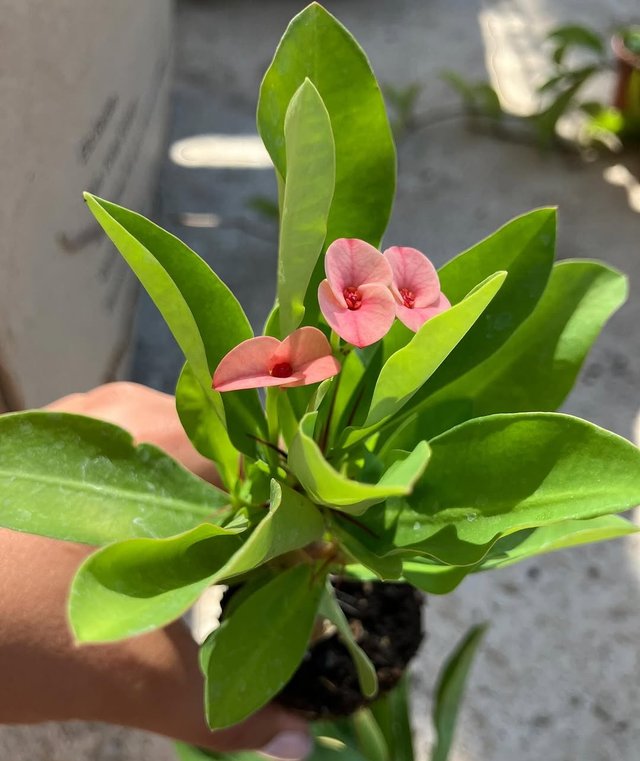Crown-of-Thorns Flower
The Crown-of-thorns, also known as Christ plant or Christ thorn, is a fascinating and symbolic succulent shrub that belongs to the spurge family, Euphorbiaceae. It is native to Madagascar, but today it is widely cultivated as an ornamental plant in tropical, subtropical, and even temperate regions around the world. With its spiny stems and bright, long-lasting flowers, the Crown-of-thorns has captured attention not only for its beauty but also for its religious and cultural associations.
Appearance and Characteristics
The Crown-of-thorns is a woody, succulent plant that can grow up to 1.8 meters tall in its natural environment, though it is often smaller when grown in pots. Its most distinctive feature is the abundance of sharp, gray-brown thorns that cover its stems. These thorns can grow up to 2.5 cm long and serve as a protective adaptation against herbivores. The plant’s stems are fleshy and can store water, which allows it to survive in dry climates.
The leaves are oval, green, and arranged alternately along the stems, though they often drop off in older parts of the plant, leaving behind the thorny stems. The true flowers of the Crown-of-thorns are small and inconspicuous, but they are surrounded by colorful bracts, usually red, pink, yellow, or white. These bracts, which resemble petals, are what give the plant its striking ornamental appeal. Remarkably, the plant can bloom almost year-round under the right conditions, making it a favorite among gardeners.
Habitat and Cultivation
In its native Madagascar, Crown-of-thorns thrives in dry, rocky areas. Because of its drought tolerance, it has become a popular plant for xeriscaping (landscaping that reduces the need for irrigation). It prefers full sunlight, well-drained soil, and minimal watering, as overwatering can cause root rot.
When grown indoors, Crown-of-thorns requires a bright, sunny window and moderate watering. It is well-suited as a houseplant due to its manageable size and continuous flowering potential. The plant can be propagated easily through stem cuttings, though care must be taken due to the milky sap it exudes when cut. This sap, characteristic of many Euphorbia species, is toxic and can cause skin irritation or eye injury if handled improperly.
| Device | cannon eos 700D |
|---|---|
| Lens | 55-250 zoom leans |
| Location | Bangladesh |




